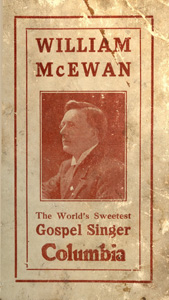"...The constitution of our English government (the best in the world) is no arbitrary Tyranny, like the Turkish Grand Seignior’s, or the French King’s, whose wills, or rather lusts, dispose of the lives and fortunes of their unhappy subjects: Nor an Oligarchy, where the great ones, like fish in the ocean, prey upon, and live by devouring the lesser at their pleasure: Nor yet a Democracy, or popular state; much less an Anarchy, where all confusedly are hail fellow well met: But a most excellent mixt, or qualified Monarchy, where the King is veiled with large prerogatives sufficient to support majesty, and restrained only from the power of doing himself and his people harm, which would be contrary to the very end of all government, and is properly rather weakness than power, the nobility adorned with privileges to be a screen to majesty, and a refreshing shade to their inferiors; and the commonalty too so guarded in their persons and properties by the sense of law, as renders them freemen, not slaves.
In France, and other nations, the meer will of the Prince is law; his word takes off any man’s head, imposes taxes, seizes any man’s estate, when, how, and as often as he lists; and if one be accused, or but so much as suspected of any crime, he may either presently execute him, or banish, or imprison him at pleasure; or if he will be so gracious as to proceed by form of their laws, if any two villains will but swear against the poor party, his life is gone. Nay, if there be no witnesses, yet he may be put to the rack, the tortures whereof make many an innocent person confess himself guilty, and then with teeming justice he is executed; or, if he prove so stout, as in torments to deny the fact, yet he comes off with disjointed bones, and such weakness as renders his life a burthen to him ever after...
This original happy frame of government is truly and properly called an Englishman's liberty..."
..............
Henry Care has been described as "London's First Spin Doctor". Born in 1646, maybe in London but probably somewhere in England, he was a prolific publisher and critic of the establishment and Stuart monarchy of King Charles II and his brother King James II - however he 'switched sides' towards the end and supported James.
Care published a summation of the liberties that English civilians should be aware of, entitled English Liberties: or, The Free-Born Subject's Inheritance, containing I. Magna Charta, The Petition of Right, The Habeas Corpus Act; and divers other most Useful Statutes: With Large Comments upon each of them.
It was published around 1680, reprinted by William Penn as The Excellent Priviledge of Liberty in 1687, and was an articulation of liberties which would only be legally fulfilled as a result of the Revolution of 1688. Care also had a hand in the production of the 1689 pamphlet Their Highness The Prince & Princess of Orange's Opinion about a General Liberty of Conscience (online here).
In these publications, Care is said to have set out "to conceptualise liberty as a birthright of all mankind, to separate religion and the state into two spheres ... was remarkable. John Locke made these selfsame points".
Care died on 8 August 1688, probably of kidney failure or liver disease caused by overwork and alcohol, not living long enough to see the Revolution begin in November of that year. He was buried at St Anne's Parish of Blackfriar's Church - even in death "his enemies vilified him for assailing the Anglican Church and writing in defence of religious liberty". An epitaph said –
A true Dissenter here does lye indeed
He ne'er with any, or himself agreed
English Liberties was frequently republished in the British Colonies in America during the 1700s – Thomas Jefferson owned a copy.
• A 1774 Rhode Island printing is online here on Archive.org























